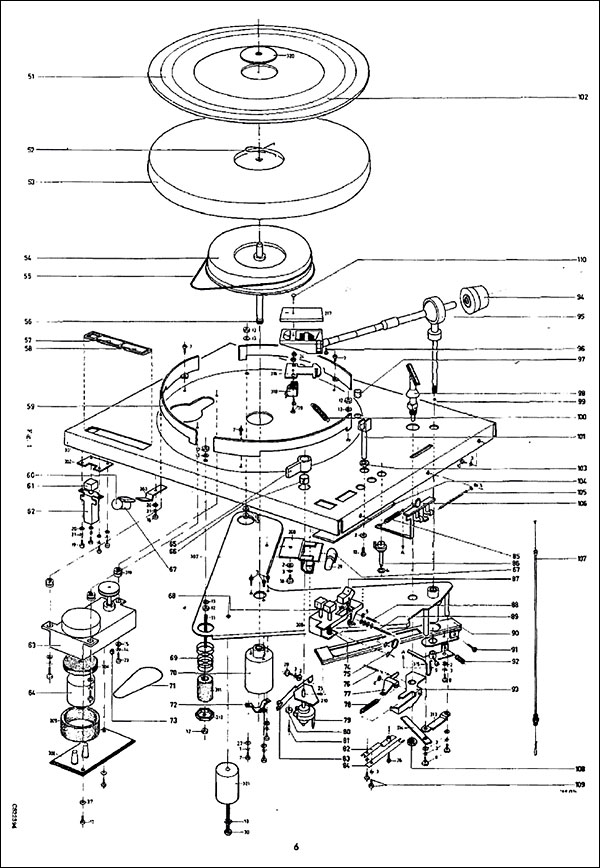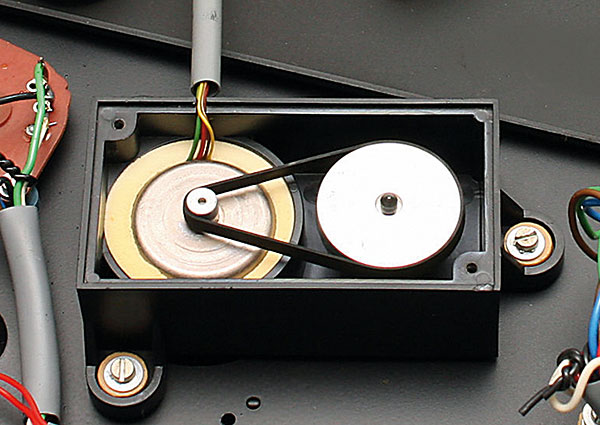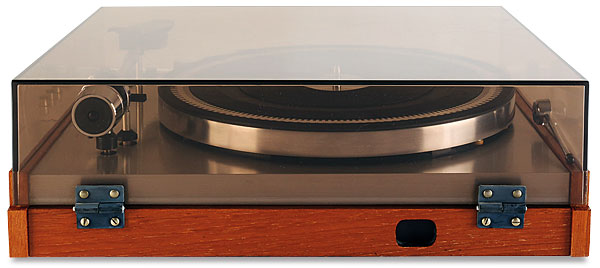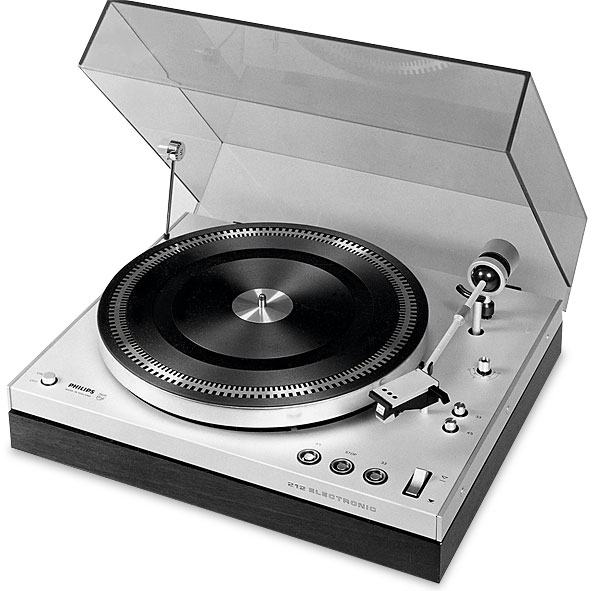Philips GA 202 Electronic Turntable Page 2
The strobe rings show that the correct speed is achieved in a leisurely manner (a Technics SP-10 MkIII this most certainly isn't) but when it snaps into lock, the pattern stays impressively stable. An odd effect is obtained when switching from 45 to 33.33rpm. This is because the freewheel allows the platter to slow down through the friction of the belt and bearings alone, but the lag in the servo allows it to run briefly below the target speed before re-engaging the drive. Such quirks must be expected from a pioneering design, and it is quite beguiling to watch.
![]() Tim Listens
Tim Listens
There is something instantly familiar about the sound of the GA 202. Curiously, its presentation is remarkably similar to that of the Philips CD104 [HFN Apr '14], a CD player that would be unveiled a decade-and-a-half later. The key points are the bass, which is rich and plummy while remaining well defined, and the smooth-sounding sweet treble that bursts with fine detail. This tonality is set against a broad and continuous soundstage in which individual sounds can be instantly pinpointed with ease. Despite any initial misgivings about the construction of the arm, it is clearly the result of careful design and when matched with a 'Super M' cartridge works well.

The drive system also contributes to the effect, being essentially silent and electrically well screened. Quiet passages, and the intervals between musical pieces, are therefore undisturbed by mechanical effects – there is no audible rumble or hum.
Rise And Shine
However, Philips' innovative motor cannot completely overcome the disadvantages of the belt-drive system. This is audible in the occasional lengthening of a note, which I suspect originates from the subchassis moving around relative to the motor assembly, rather than a deficiency in the servo system.

It is with modern, well produced material where the GA 202 really shines. Its ability to preserve the sheen of quality recordings, such as Fleetwood Mac's Tango In The Night [WB 925 471-1] is what sets it apart from its peers, a clean pressing being difficult to separate sonically from the CD version. Secure tracking coupled with a strong centre vocal presence results in optimised information retrieval.
The GA 202 isn't perfect though. A track like 'Caroline' played at high levels shows that the placement and isolation of the deck remain critical. Ignore this and bass may smear and bloom on heavy notes, suggesting that feedback at low frequencies is occurring. I suspect the lightweight arm and high-compliance pick-up are the root of this problem, but tap tests with the needle in the groove and the motor stopped proved inconclusive. Back to the days of the paving slab?

The abilities of the GA 202 were also demonstrated with music less conspicuously 'produced'. The solo piano on Beethoven's 'Für Elise' [Philips 412 227-1] was projected into my room with the sort of easygoing realism that seems to characterise this deck. Sustained notes were not quite direct-drive solid, but the silences between them were subjectively silent in regard to motor, bearing and surface noises. Again, it is the expansive soundstage which brings performances to life. I can't think of many rivals that turn the 'wiggles' in the plastic back into music so consistently in this respect.
The design of any turntable is a balance of compromises, but the engineers at Philips seem to have found a sweet spot with the GA 202. Without a great deal of fuss the various parts operate harmoniously in a way I've experienced with few other turntables. A brief audition of a GA 212 confirmed a similar level of performance, with incrementally improved speed stability. Another gem from Holland...
Buying Secondhand
The GA 202, '212 and '312 are all still widely available, and are inexpensive. The Super M cartridges have a minor following, but the turntables themselves remain an object of suspicion among buyers of vintage kit. If you are in the market for one of these models it thus makes sense to seek out a clean, original and well cared for example. Surprisingly, faults in the electronics are rare, due no doubt to the high quality of the components used.

A Final Plug
There are pre-set adjustments inside, but one must resist the temptation to randomly fiddle with them if something goes wrong. The touch pads on the GA 212 and '312 are not that sensitive, so if you have dry hands you may have to dampen your finger slightly to operate them.
Replacing the GA 202's upper belt is straightforward but the lower one is hidden inside. It's easy to break the short and delicate leads from the arm to the cable when removing the bottom cover. Some versions have a removable mains cable with a special plug. Replacements are very hard to find, so ensure this is present and in good condition if buying.
Hi-Fi News Verdict
Philips isn't universally associated with turntable design but the world was a different place in the 1970s... Back then, the brand's vast development resources, its ownership of a major record label and ability to produce every part in-house, resulted in an outstanding design with great potential. This is probably one of vintage hi-fi's last true bargains, but they won't be the price of a couple of LPs forever...


















































